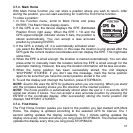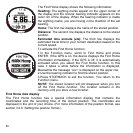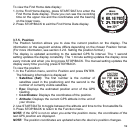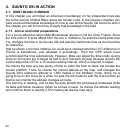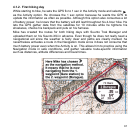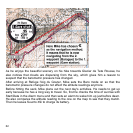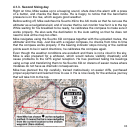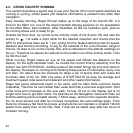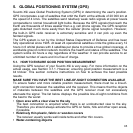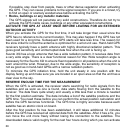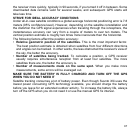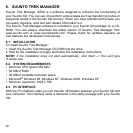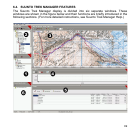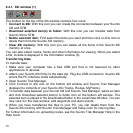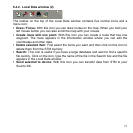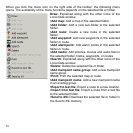65
5. GLOBAL POSITIONING SYSTEM (GPS)
Suunto X9i uses Global Positioning System (GPS) in determining the user's position.
GPS incorporates a set of satellites that orbit the Earth at the altitude of 20 000 km at
the speed of 4 km/s. The satellites send relatively weak radio signals at power levels
comparable to normal household light bulbs. Because the GPS signals that reach the
Earth are thousands of times weaker than e.g. cell phone signals, the GPS reception
gets disturbed much more easily than the cellular phone signal reception. However,
the built-in GPS radio receiver is extremely sensitive and it can pick up even the
faintest signals.
The GPS system is run by the United States Department of Defense and has been
fully operational since 1995. At least 24 operational satellites circle the globe every 12
hours in 6 orbital planes with 4 satellites per plane to provide a true global coverage. A
worldwide ground control network monitors the health and status of the satellites. The
system works 24 hours a day regardless of the weather. It can provide service to an
unlimited number of users and it is free of charge.
5.1. HOW TO ENSURE GOOD POSITION MEASUREMENT
Using the GPS receiver of your Suunto X9i is very easy. For more information on the
actual usage, see Section 3.7.1. However, ensuring good position measurement is a
bit trickier. This section contains instructions on how to achieve the best possible
results.
MAKE SURE YOU HAVE THE BEST LINE-OF-SIGHT CONNECTION AVAILABLE
To ensure faster and more reliable position measurement, there must be a line-of-
sight connection between the satellites and the receiver. This means that the objects
or materials between the satellites and the GPS receiver must not excessively
attenuate the signal. The list below displays the possible line-of-sight conditions from
the best to the worst:
• Open area with a clear view to the sky
The best connection is acquired when there is an unobstructed view to the sky.
Therefore you should always activate the GPS on fields, hills and other open areas,
if possible.
• Relatively thin plastic, fabric or wooden covers
The receiver usually works well inside tents and other thin covers.
• Water-containing objects



